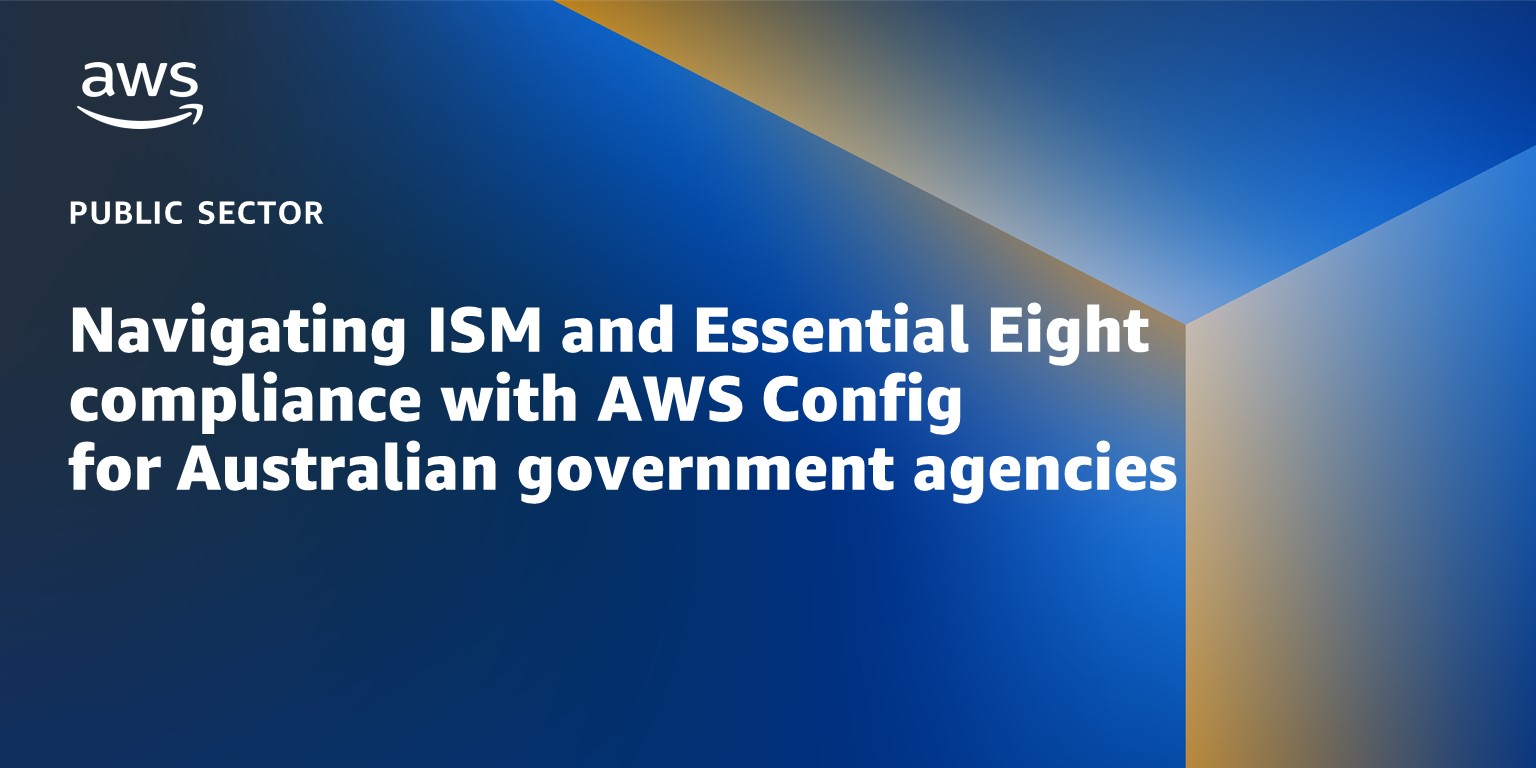AWS Public Sector Blog
Category: Government
Get no-cost, in-person training and hands-on help at the AWS Federal Learning Days
From September 12-15, AWS will hold AWS Federal Learning Days at our HQ2 location in Arlington, VA. Built for a range of federal customers, from mission owners to cloud technical experts to IT managers, AWS Federal Learning days can help you improve your cloud knowledge and learn new ways to achieve your mission outcomes. Whether you’re a cloud expert or just beginning your journey, the daily AWS training sessions at the AWS Federal Learning Days will cover a range of technical and mission-oriented topics to help hone your skills.
Navigating ISM and Essential Eight compliance with AWS Config for Australian government agencies
To help our Australian customers, AWS provides pre-built conformance packs for the Australian Cyber Security Centre (ACSC) Essential Eight Maturity Model and the ACSC Information Security Manual (ISM). The ACSC’s Essential Eight was first published in 2017 and is a set of prioritised security mitigation strategies designed to help protect organisations against various security threats. In this blog post, I walk you through how to set up a conformance pack in AWS Config that is designed to help you implement and track the ASCS Essential Eight model.
How Carbyne’s cloud-native platform helps 911 call centers put eyes on the scene and more
Carbyne, an AWS justice and public safety customer and partner, provides 911 call handling systems, offering a cloud-native software as a service (SaaS) platform. Although any public safety answering points (PSAPs) can benefit from Carbyne’s cloud-powered solution, certain regions with hostile, remote terrain can especially benefit from improved caller location and the ability to put eyes on the scene. This is crucial, for example, in situations where people are lost or hurt in the desert, and in desert-heavy counties that form the Rio Grande Council of Governments (RGCOG). Using Carbyne improved RioCOG’s caller location from an accuracy of a few miles to within roughly 10 meters on over 85% of emergency calls.
How to implement CNAP for federal and defense customers in AWS
In July 2021, the U.S. Department of Defense (DoD) released a cloud native access point (CNAP) reference design that follows zero trust architecture (ZTA) principles and provides a new approach to access mission owner (MO) applications. The DoD’s reference design discusses four core capabilities of CNAP: authenticated and authorized entities (C1), authorized ingress (C2), authorized egress (C3), and security monitoring and compliance enforcement (C4). In this blog post, we walk through how to establish the C2 component via a virtual internet access point (vIAP) with AWS. The proposed architectures can reduce operational cost and management overhead, while improving the accessibility, resiliency, and security of mission owner applications.
How the Port of Long Beach addresses supply chain challenges with AWS
The Port of Long Beach, California is the second busiest port in the United States and needs to effectively process and oversee more than $200 billion worth of cargo each year. In addition to keeping track of items and effectively communicating with stakeholders, the Port in recent times has had to contend with shipping delays and other supply change issues exacerbated by the pandemic. To increase visibility and efficiency of cargo movement, the Port turned to AWS to pioneer an innovative solution in the cloud.
Last chance to register for the IMAGINE 2022 conference for education, state, and local leaders
The IMAGINE 2022 conference presented by AWS is fast approaching, but there’s still time to register your spot. On Wednesday, August 3, 2022 at the Seattle Convention Center in Seattle, Washington, the IMAGINE 2022 conference will bring together education, state, and local leaders for a full day of learning about the latest innovations and best practices in the cloud to help transform communities. Join other mission-driven leaders for a full day of learning at this in-person event that combines thought leadership sessions, fireside chats, and networking opportunities designed to leave you with inspiration, new connections, and tangible ideas to take back to your organization or institution.
Four ways to buy cloud with federal year-end funds
The end of the US federal government fiscal year is fast approaching. With budget left to spend before September 30, agencies need to obligate their remaining 2022 fiscal year funds. AWS can provide federal agencies with options to procure future cloud computing resources using current-year funds. Learn more about efficient purchasing recommendations to meet your agency’s needs.
How NRCan used an AWS open source solution to complete a PBMM evidence package in 60 days
Since signing a framework agreement with the Government of Canada (GC) in 2019, AWS has developed an open source solution to automate the deployment of security controls for GC customers, which can reduce the time it takes to achieve an Authority to Operate (ATO). Natural Resources Canada (NRCan) used this solution to implement their cloud landing zone controls aligned with the Protected B, Medium Integrity, Medium Availability (PBMM) profile. They worked with AWS Partner Kainos to complete an ATO evidence package in only 60 days—a process that typically takes 18 months.
How the City of Fort St. John increased access to government services with AWS
In 2020, the City of Fort St. John in British Columbia began searching for innovative solutions to make life more simple for its young population. City staff wanted to better serve residents in ways that would suit their busy, digitally connected lifestyles. So the city worked with Cocoflo, a smart cities technology company, to implement a digital solution that could make municipal information and services more accessible through their SmartLiving portal—powered by AWS.
Running government workloads securely at the edge
Edge computing moves data processing and analysis close to endpoints where data is generated to deliver real-time responsiveness, and reduces cost associated with transferring large amounts of data. Edge environments include Internet of Things (IoT) or mobile devices, sensors, video cameras, and other connected resources. With edge, the usual security principles still apply such as protecting data at rest and in motion, but new considerations emerge. Learn more in the new IDC whitepaper.









